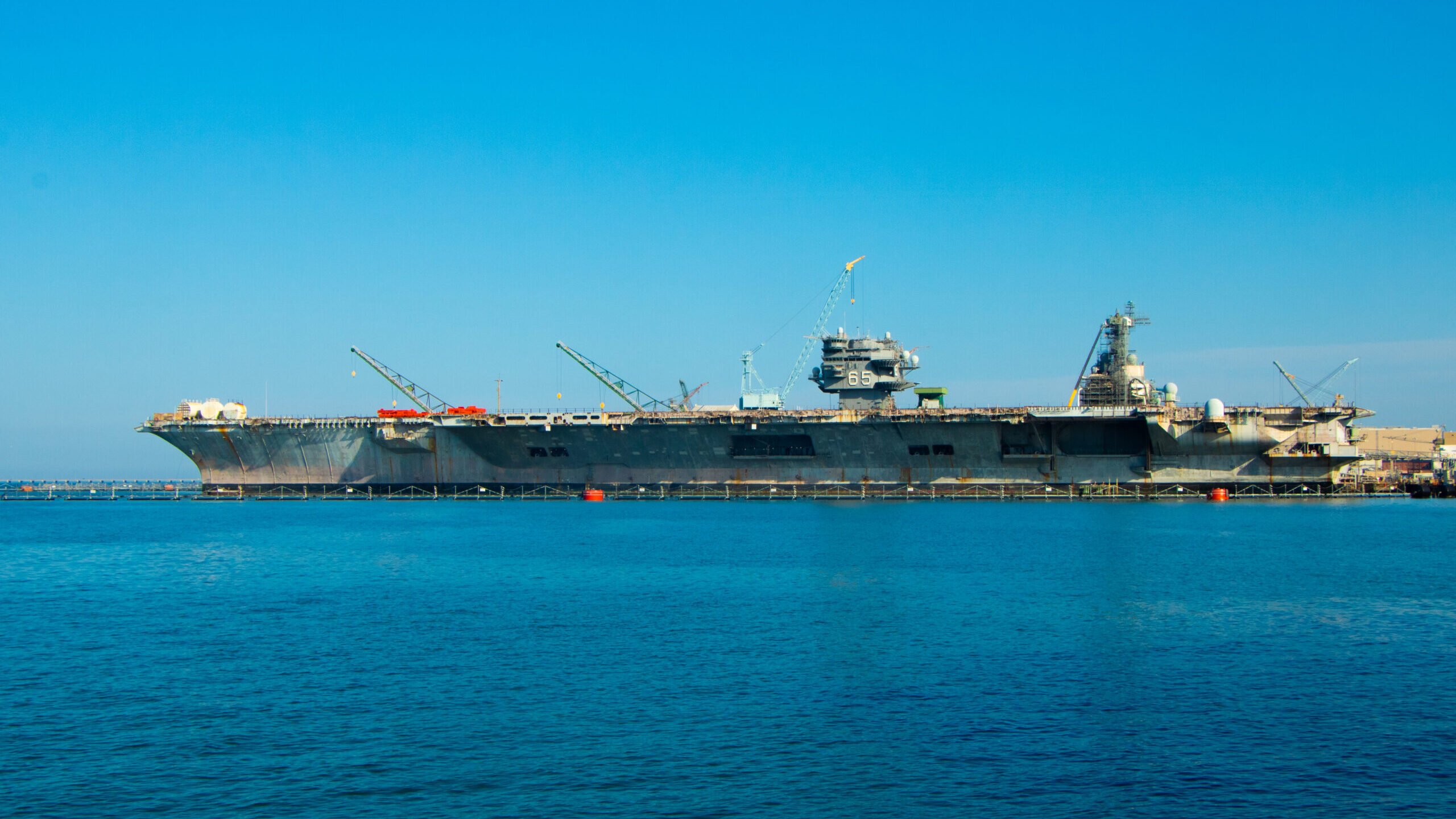
The former USS Enterprise (CVN-65) sits in port at Newport News Shipbuilding awaiting final inactivation. (Justin Katz/Breaking Defense)
Updated 7/10/2023 at 4:30 pm ET with comments from the US Navy.
WASHINGTON — The Navy has published the final draft of its environmental impact statement assessing how it should go about dismantling the former aircraft carrier Enterprise (CVN-65), a process that will likely set decades-long precedents for future nuclear-powered ships.
Environmental impact statements, as the name implies, are lengthy documents that outline the dangers to the ecosystem that disposing of decades-old nuclear reactors can pose, as well as identify one of several courses of action with which the Navy prefers to move forward. Due to the numerous state and federal agencies that must weigh in, as well as considering the general public’s comments, the documents often take years to produce and finalize.
RELATED: Ninth of its name: HII, Navy lays the keel for next Enterprise
In this case, the Navy’s preferred method involves contracting with commercial industry to dispose of the former ship’s nuclear components. In its final impact statement, published June 30, the service says the other two alternatives, which would rely heavily on employing one of the public shipyards, would negatively impact the Navy’s ability to conduct maintenance on the operational fleet.
“As a result of growing workload due to a higher fleet operational tempo and capacity shortages across all of the Navy public shipyards, [Puget Sound Naval Shipyard] is challenged to execute their current and projected workload with existing and planned facilities,” according to the impact statement. “Leveraging options to perform ex-Enterprise disposal at commercial facilities is advantageous to the Navy and allows [Puget Sound Naval Shipyard] to prioritize the limited public shipyard infrastructure and workforce for active fleet maintenance.”
If the service were to use Puget Sound for the dismantlement, it estimates the work would not finish until between 2030 and 2040, whereas the Navy believes a commercial company could finish the job “sooner and at a lower cost.”
Under the law that requires the Navy to produce these impact statements, the service also must present a “no action alternative,” which would essentially require the service to store the former Enterprise in port indefinitely.
In April, the service published a notice indicating it would begin discussions with HII about going through the same process for the second nuclear-powered aircraft carrier slated for inactivation, the Nimitz (CVN-68). HII, which has long been the prime contractor for the US Navy’s aircraft carriers, has had the former Enterprise at its dock in Newport News, Va., while the Navy works through the process of planning its dismantlement.
A Navy spokeswoman today told Breaking Defense the service will wait 30 days for the public to review the final impact statement before moving forward to select a contractor.
“After the wait period, the Navy will select an alternative and issue a record of decision. Once the record of decision is issued, the Navy will be able to begin the standard contracting process,” she said.
Shipbuilder Austal USA names Michelle Kruger as new president
Kruger had been serving as interim president since former chief Rusty Murdaugh resigned last spring.



























